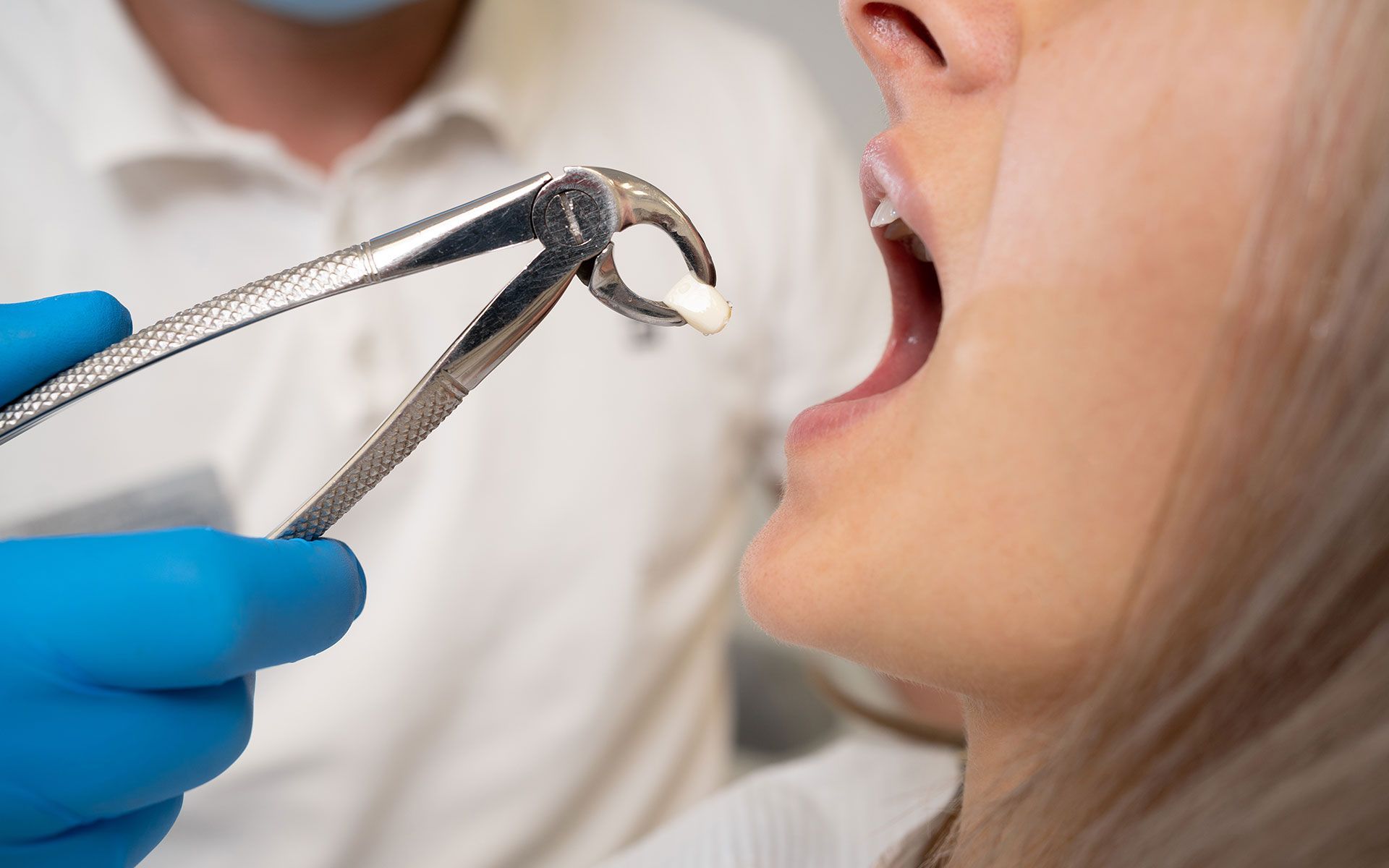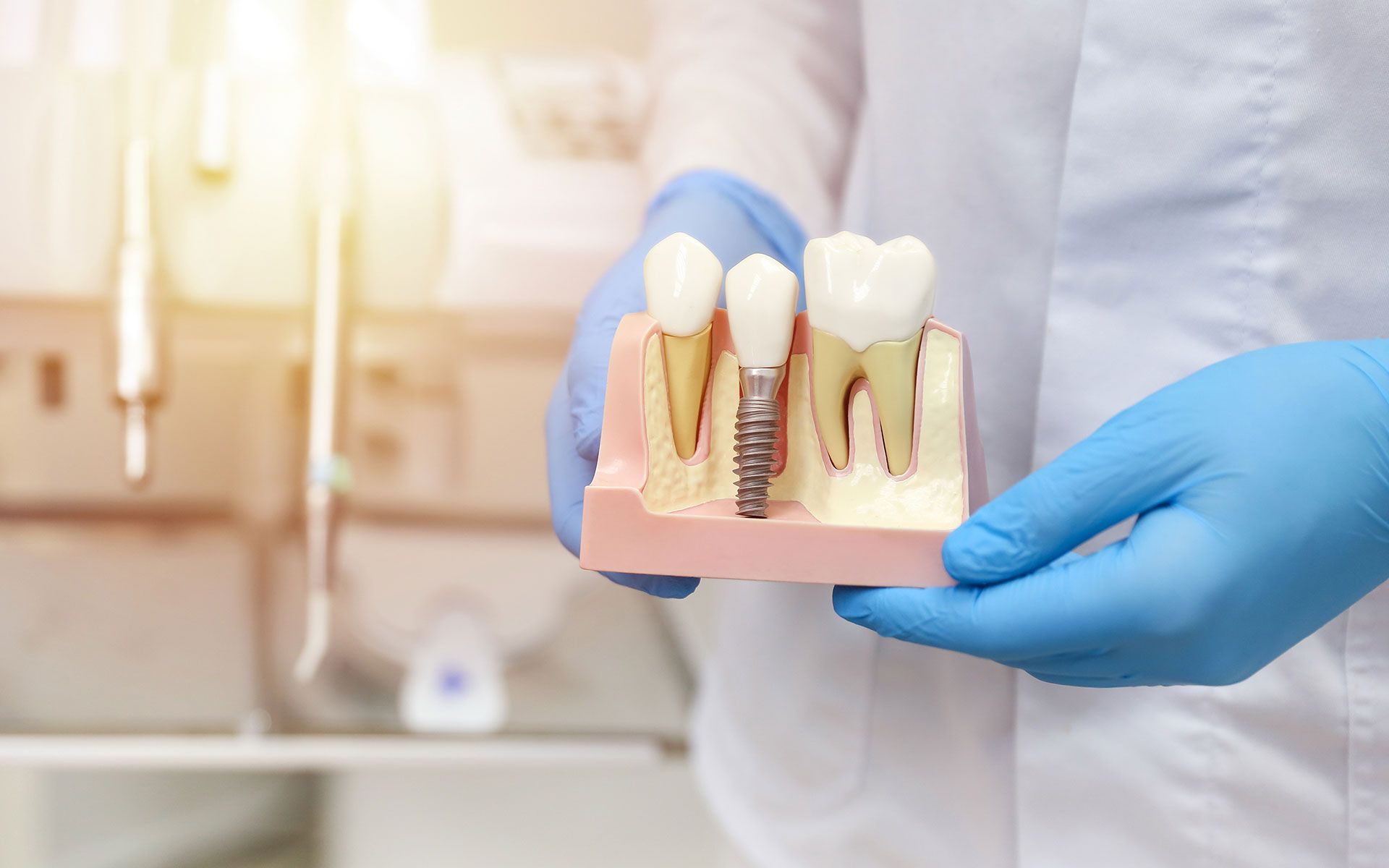Tooth Extractions in Smithtown, NY
Tooth extractions are sometimes necessary to protect your overall oral health when a tooth becomes damaged, decayed, or poses a risk to adjacent teeth and bone structure. At Norman M. Rubin, DDS in Smithtown, NY, we provide both routine and surgical tooth extractions in a controlled, professional setting. Each procedure is performed with careful consideration for long-term function and comfort.
When Tooth Extractions Are Recommended
There are several dental conditions where extracting a tooth is the most appropriate treatment. Severe tooth decay that has extended into the pulp and is beyond repair may not be salvageable with a filling, crown, or root canal. In such cases, removal prevents the spread of infection and allows for proper healing.
Fractured teeth that break below the gumline or cannot be reconstructed with restorative treatments may also require extraction. Advanced periodontal disease can lead to tooth mobility and bone loss, often resulting in the need to remove compromised teeth to prevent further deterioration.
In addition, impacted or misaligned wisdom teeth frequently cause pain, crowding, and inflammation. Extracting these third molars helps preserve the alignment of surrounding teeth and reduces the risk of future complications.
Orthodontic preparation may also call for extractions to create space and allow for more effective alignment of the remaining teeth. This is especially common in cases of overcrowding.
Simple Extractions vs. Surgical Extractions
Tooth extractions fall into two primary categories: simple and surgical. The type of extraction required depends on the position, health, and condition of the tooth.
Simple extractions are performed when the tooth is fully erupted and visible above the gumline. Under local anesthesia, the tooth is gently loosened from the socket and removed with specialized instruments. This method is commonly used for teeth affected by decay or mobility but without impaction.
Surgical extractions are more complex and are necessary when a tooth is partially or fully impacted, broken beneath the gumline, or surrounded by dense bone. The procedure involves making a small incision in the gum to access the tooth. In some cases, the tooth may need to be sectioned into smaller pieces for removal.
Wisdom tooth extractions often fall into the surgical category due to impaction, angulation, or partial eruption.
Managing Discomfort and Promoting Recovery
At our Smithtown, NY dental office, patient comfort is a top priority throughout every extraction procedure. Local anesthesia is used to numb the area completely, and sedation options are available for patients undergoing surgical extractions or experiencing dental anxiety.
Following the procedure, post-operative instructions are provided to promote healing and minimize discomfort. These guidelines include rest, avoiding physical activity, and refraining from using straws or smoking to reduce the risk of dry socket—a painful condition where the blood clot at the extraction site is dislodged prematurely.
Cold compresses and over-the-counter pain medications are typically sufficient to manage swelling and soreness. For surgical cases, antibiotics or prescription pain relief may be recommended depending on the extent of the procedure and the patient's medical history.
Preparing for Dental Restoration After Extraction
Tooth extractions often precede restorative procedures, especially when the removed tooth is part of a treatment plan involving implants, dentures, or bridges. In these instances, planning for the replacement of the extracted tooth is essential to prevent shifting of neighboring teeth and loss of bone in the area.
When a dental implant is planned following extraction, bone grafting may be performed during the same visit to preserve bone structure and support future implant placement. This is particularly important in the case of molars or anterior teeth where aesthetics and function are both critical.
Delaying tooth replacement after extraction can lead to further complications, including bone resorption and bite changes. For that reason, we discuss all restoration options with patients before and after extraction to ensure proper timing and coordination of care.
Wisdom Tooth Extraction and Monitoring
Wisdom teeth, also known as third molars, typically begin to erupt in the late teens or early twenties. Due to their location and limited space in the jaw, these teeth often become impacted or grow at an angle, causing pain, swelling, and even infection.
At Norman M. Rubin, DDS, wisdom tooth development is closely monitored through periodic imaging. If extraction is necessary, it is scheduled before complications arise. Surgical removal of impacted wisdom teeth is typically performed under local anesthesia with or without sedation, depending on the complexity of the case.
Timely removal of problematic wisdom teeth helps avoid infection, cyst formation, and damage to adjacent molars.
Diagnostic Tools and Treatment Planning
Before recommending an extraction, a thorough evaluation is performed. Digital x-rays and 3D imaging allow us to visualize the tooth's position, root structure, and surrounding bone. This diagnostic process ensures that extractions are approached conservatively and only when other restorative treatments are no longer viable.
Every treatment plan at our Smithtown, NY office is personalized. We ensure that patients are fully informed about the reasons for extraction, the procedure itself, and the options for post-extraction care and restoration.

